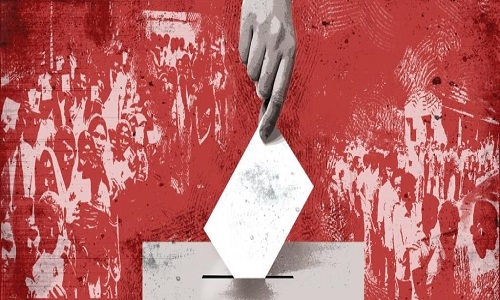Lok Sabha elections.. Regional parties gained importance in early 90s
| Date :13-Apr-2024 |

By Vikas Vaidya
The participation of regional and local parties in Lok Sabha polls assumed importance from early 90s in Maharashtra. The national parties always tried to finish these parties but they could not. Some years ago, a very senior leader of an old national party had said that the existence of regional parties is making the country face hung parliament. But the importance of regional parties kept rising. Not all regional parties succeeded in establishing dominance as most leaders formed them by splitting from some national groups. Shiv Sena is one regional party that one can say made its presence felt in the national politics too. If one has a look at the journey of these regional parties and their performance, one would notice that these parties always had to take the support of some or the other national party. More than 30 years ago, Congress used to fight either with Communist Party of India or Jansangh or Janata Party. Shiv Sena is the first major regional party that came into being in 1966. But it did not contest polls till 1989. In 1970s, Sena expanded its pro-Marathi ideology to supporting a broader Hindu nationalist agenda.
It joined hands with the Bharatiya Janata Party (BJP). In 1989, it contested Lok Sabha polls with BJP as its ally. Nobody thought then that Sena would become a threat to national parties later on. In Maharashtra, nobody can talk about politics without ignoring Shiv Sena. Single party rule became passe after 90s. The second party that was formed in 1999, by Sharad Pawar, P A Sangma, and Tariq Anwar was Nationalist Congress Party (NCP). It was the second experiment of Sharad Pawar. This experiment worked well till its split in 2023 as Ajit Pawar formed a separate group. Splitting from national party like Congress and forming a separate group was not an easy job. But Pawar did it and he succeeded to a large extent. Because of NCP, Pawar established his dominance on national stage. Despite Modi wave in 2019, Pawar’s charisma brought four Lok Sabha seats for his party in Maharashtra.
Maharashtra Navnirman Sena was founded in 2006 in Mumbai by Raj Thackeray after he had differences with his cousin Uddhav Thackeray. MNS won 13 assembly seats in 2009 assembly polls. Politically, MNS did not remain active for long except in the public meetings addressed by Raj Thackeray. But its dominance continued. It is evident from the fact when two days ago, MNS extended its support to Modi and it became the talk of the town. Dr Babasaheb Ambedkar had announced Republican Party of India in 1956 but it was formed after his death in the same year. His idea was to make the party a national one. Unfortunately, the leaders in the party kept splitting and forming their own parties. These parties formed by individual leaders became regional ones. In 2009, all factions of RPI came together and formed Republican Party of India (United). The group Bharipa Bahujan Mahasangh of Prakash Ambedkar refused to join hands. That experiment failed.
To prevent threat from these regional parties, national parties started forming alliance with them by offering one or two seats. For example for the last 10 years, Republican Party of India (Ramdas Athawale) allied with BJP without making any major impact. Jogendra Kawade, who had won from Chimur, formed Peoples Republican Party, Sulekha Kumbhare of Bahujan Republican Ekta Manch, Raju Shetty of Swabhimani Party, Bachchu Kadu’s Prahar, Mahadev Jankar of Rashtriya Samaj Paksh are making their presence felt. MNS did not make any political alliance with anyone except extending support. On the contrary, NCP or Shiv Sena kept forming alliance with Congress and BJP respectively. Though Shiv Sena experienced split, their dominance in both groups remained effective. The two major alliances--Maha Vikas Aaghadi and Mahayuti have one national party each--BJP and Congress with two regional parties--NCP and Shiv Sena. Despite split in Sena and NCP, both national parities had to take the support of both these regional parties into account.
